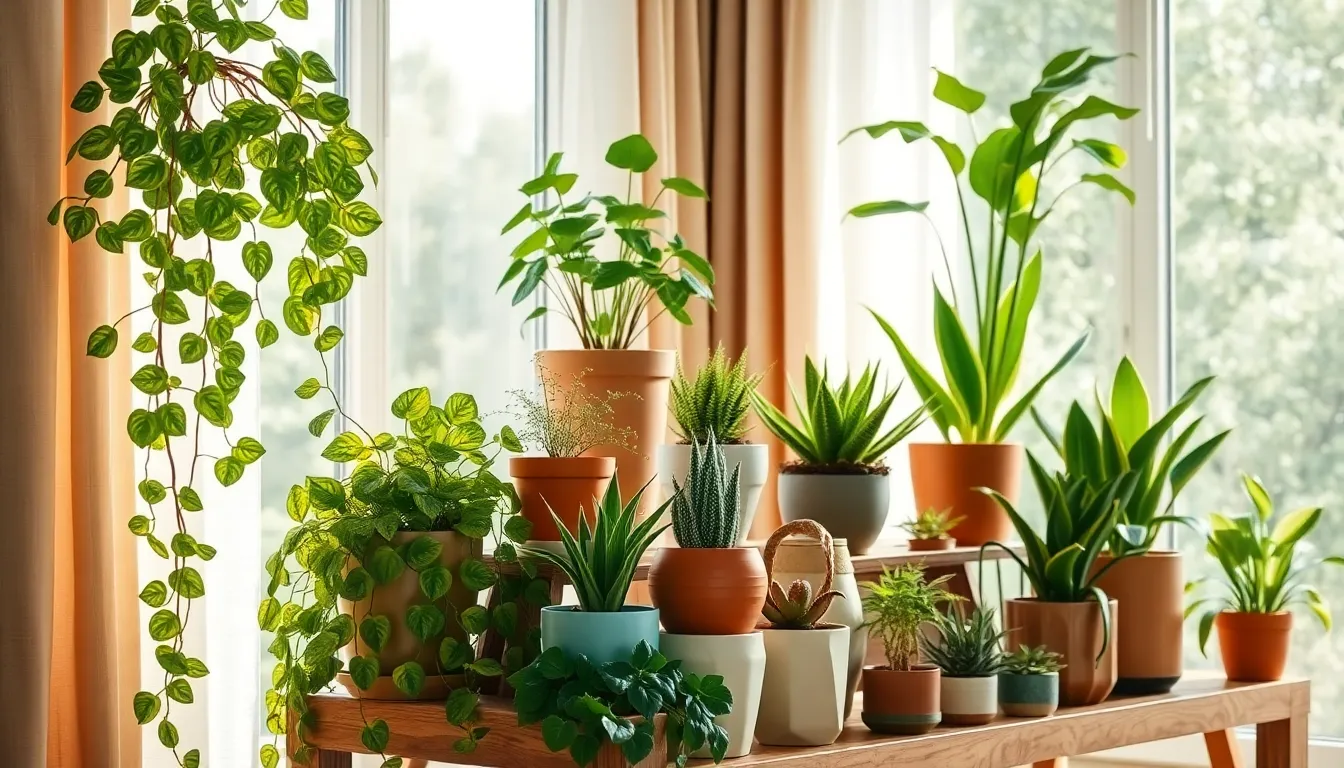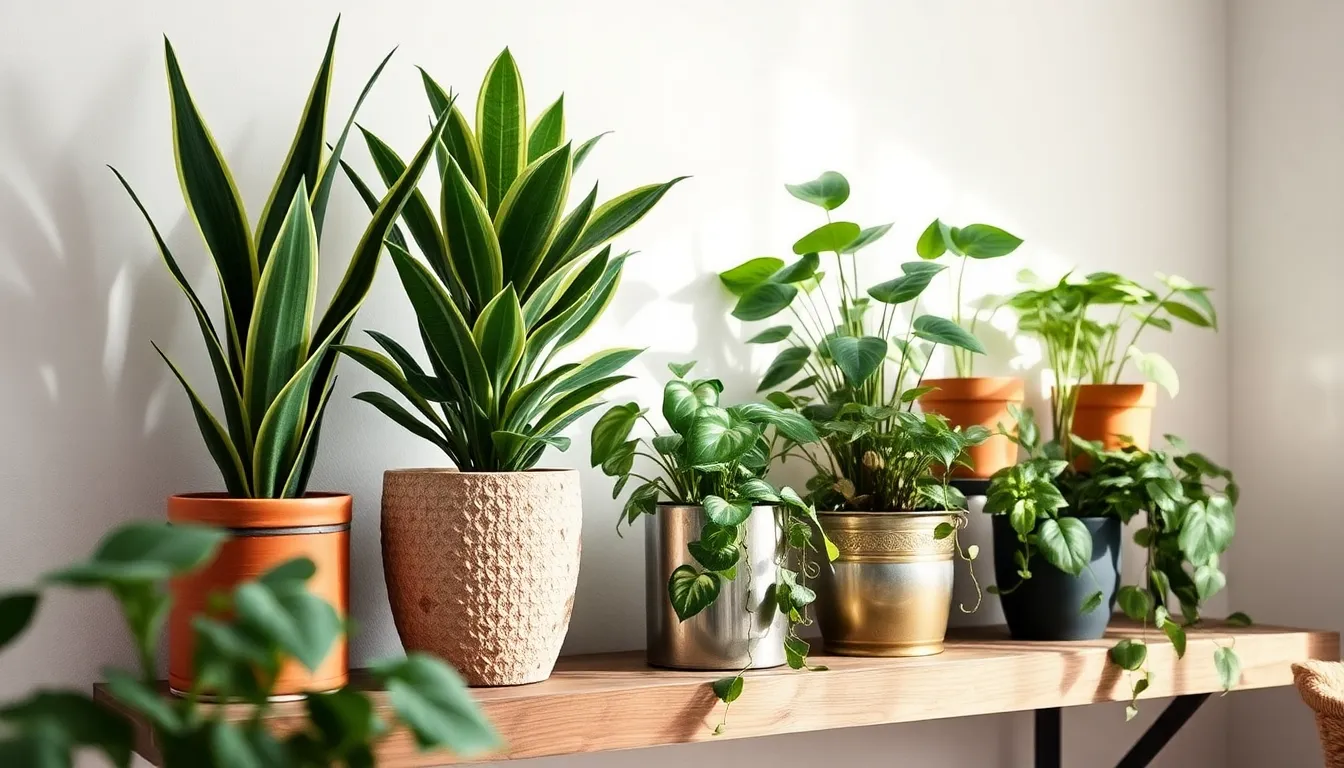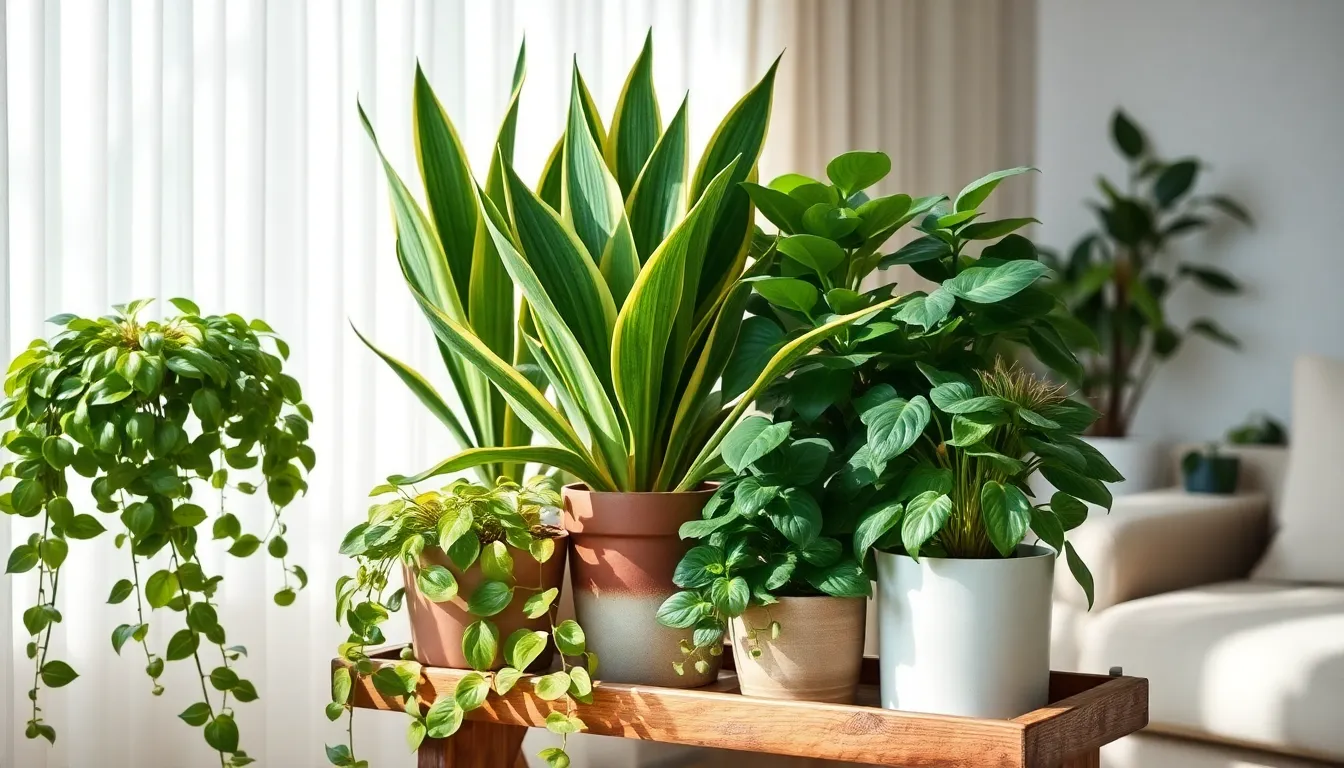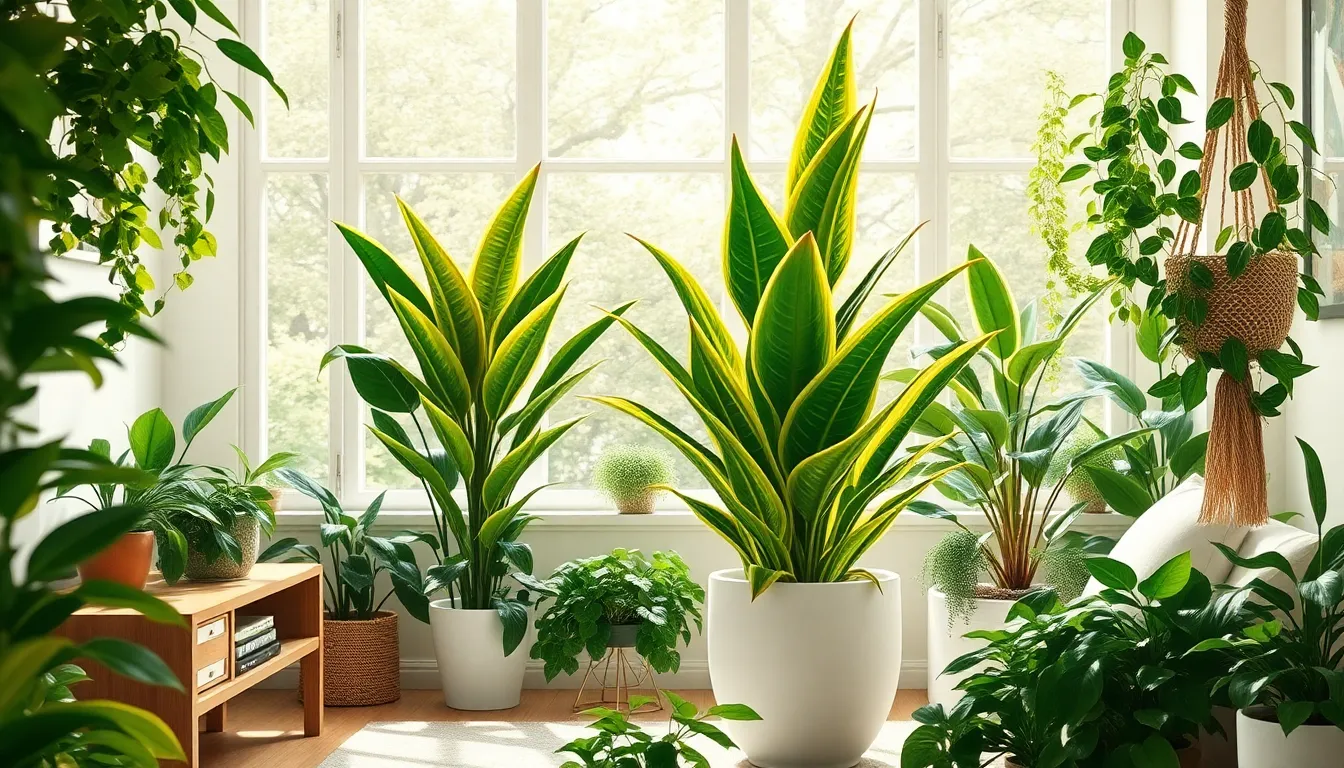Welcoming a new houseplant into your home is like inviting a breath of fresh air and a splash of life into your living space. Whether you’re nurturing your very first plant or adding to an already thriving collection, the journey of becoming a plant parent can be both rewarding and enlightening. Houseplants not only enhance the aesthetic of your home but also offer a sense of tranquility and a connection to nature that many of us crave in our busy, modern lives. For the seasoned gardener, revisiting the basics of houseplant care can provide fresh insights and renewed appreciation for these verdant companions.
In this article, we’ll explore a selection of houseplants that are particularly well-suited for beginners, yet charming enough to captivate even the most experienced green thumbs. You’ll learn how to choose plants that align with your lifestyle and environment, ensuring a harmonious and flourishing indoor garden. Together, we’ll demystify the essentials of plant care—light, water, and soil—tailoring them to each plant’s unique needs without overwhelming you with complex jargon. By the end, you’ll have the confidence to cultivate a thriving indoor oasis, no matter your previous experience.
Our goal is to make the process of choosing and caring for houseplants as joyful and stress-free as possible. With a mix of practical advice and inspiring ideas, you’ll be equipped to create a lush, vibrant space that not only beautifies your home but also enriches your daily life. So, whether you’re starting with a single succulent or planning a verdant jungle, let’s embark on this green journey together, and watch your indoor garden—and your love for plants—grow.
Choosing Easy-Care Houseplants
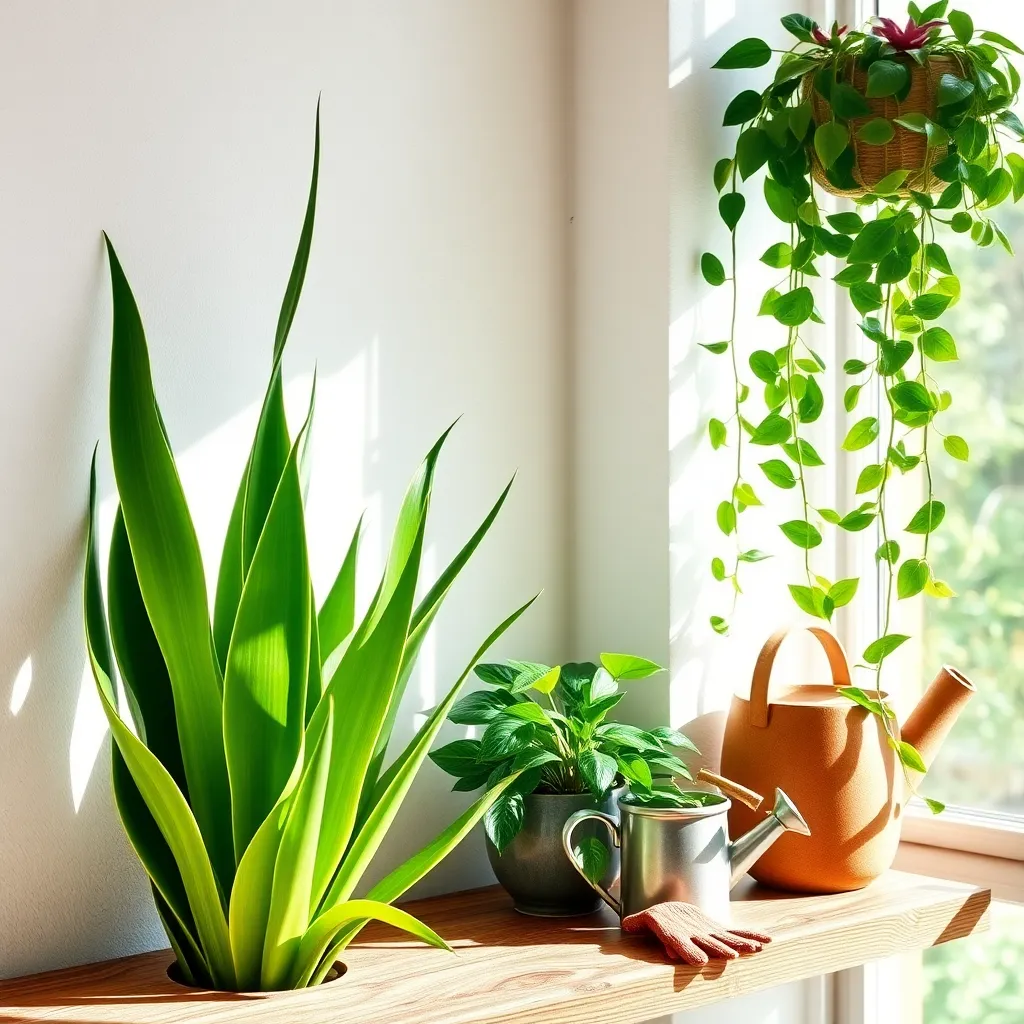
When starting with houseplants, choosing easy-care varieties can boost your confidence as a beginner gardener. One excellent choice is the snake plant, which thrives in low light and requires infrequent watering, making it perfect for those with a busy schedule.
Another great option is the pothos plant, known for its resilience and ability to grow in various lighting conditions. For best results, keep the soil slightly moist and use a well-draining potting mix to prevent root rot.
Consider the ZZ plant if you’re looking for a plant that can handle neglect. This plant is drought-tolerant and prefers indirect light, needing watering only when the soil has completely dried out.
For those ready to explore a few more options, the spider plant is forgiving and can adapt to different environments. It thrives in bright, indirect light and benefits from being watered once the top inch of soil feels dry.
Understanding Light Needs
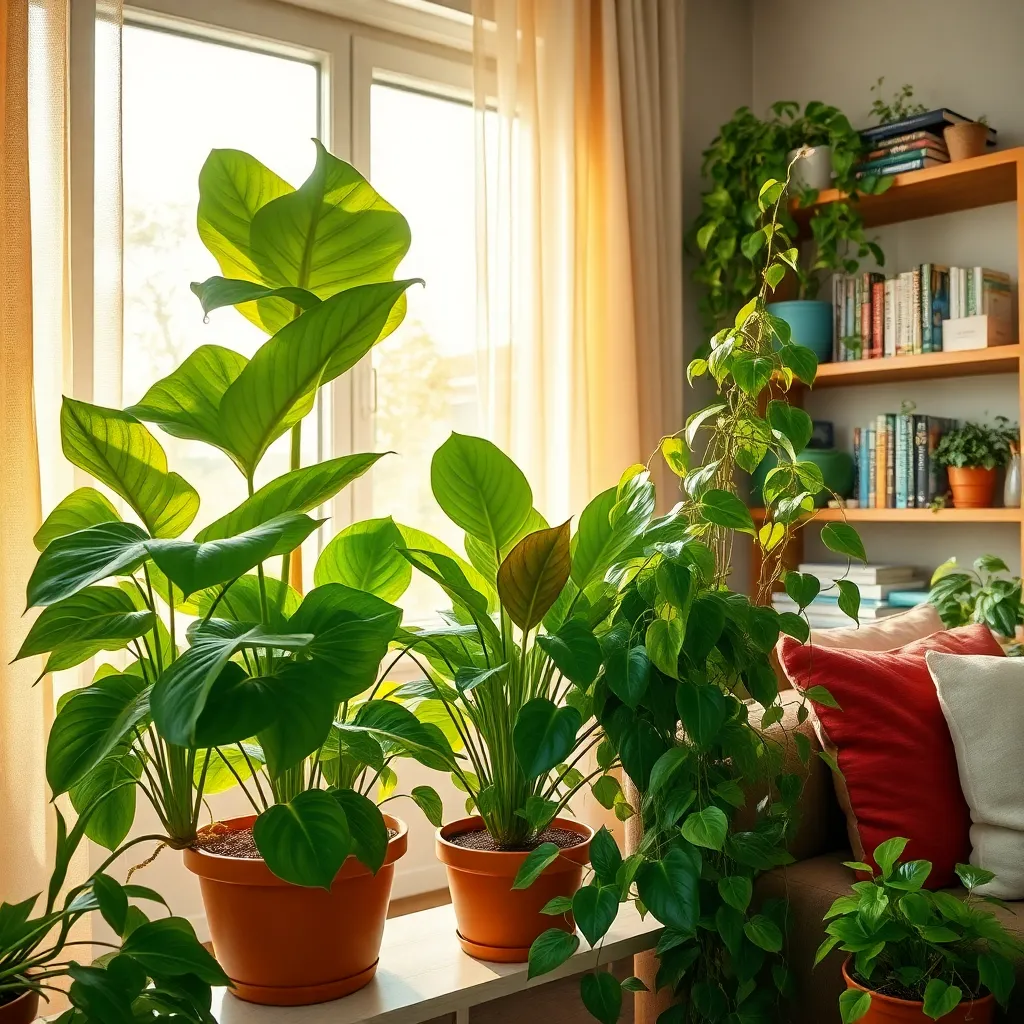
Understanding the light needs of your houseplants is crucial for their growth and health. Different plants have varying requirements, and placing them in the right spot can make all the difference.
Natural light is generally categorized into three types: bright, indirect, and low light. Bright light is ideal for succulents and cacti, which thrive in sunny windowsills where they can soak up the rays.
For plants like ferns and peace lilies, indirect light is best. Position these plants near windows but not in direct sunlight, as it can scorch their leaves.
In contrast, some plants, such as snake plants and pothos, can tolerate low light conditions. These plants are perfect for darker corners of your home or offices with limited natural light.
To ensure your plant is getting the right amount of light, observe the leaves for signs of distress. If the leaves are turning yellow or brown, it may indicate too much or too little light, prompting you to adjust its location.
Basic Watering Guidelines
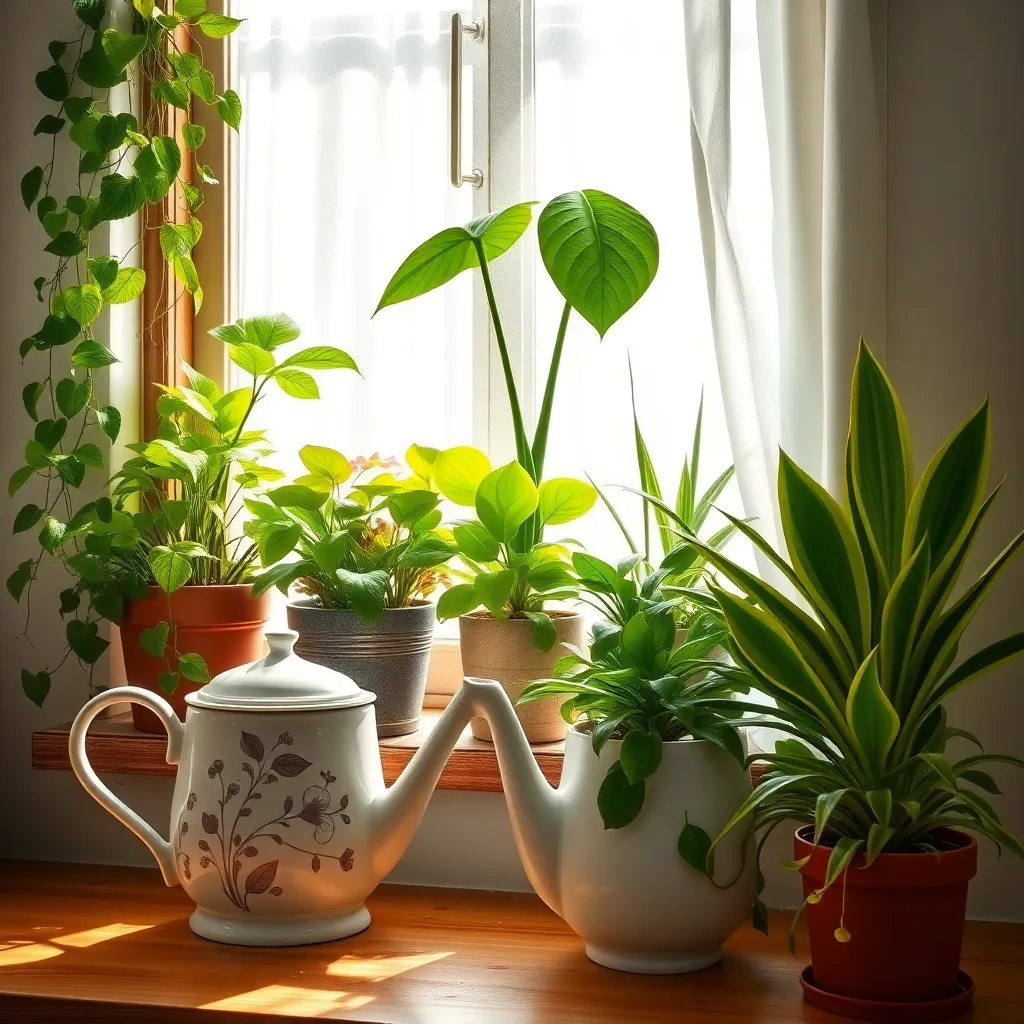
Watering is one of the most crucial aspects of houseplant care, yet it’s often misunderstood. Understanding the specific needs of your plants will help you avoid common pitfalls like overwatering or underwatering.
To start, always use room temperature water when tending to your houseplants to prevent shocking their roots. It’s essential to ensure that your pots have drainage holes to allow excess water to escape, preventing root rot.
Check the soil moisture by sticking your finger about an inch into the soil; if it feels dry, it’s time to water. For plants like succulents and cacti, allow the soil to dry out completely between waterings as they store moisture in their leaves.
For more water-loving plants, such as ferns and peace lilies, maintain consistently moist soil but avoid waterlogged conditions. Consider using a self-watering pot for these varieties to help maintain the right moisture levels with less effort.
Advanced gardeners might use a moisture meter to ensure precision in their watering routine. This tool can be especially helpful in maintaining consistent care throughout different seasons when humidity and temperature fluctuate.
Soil and Potting Essentials
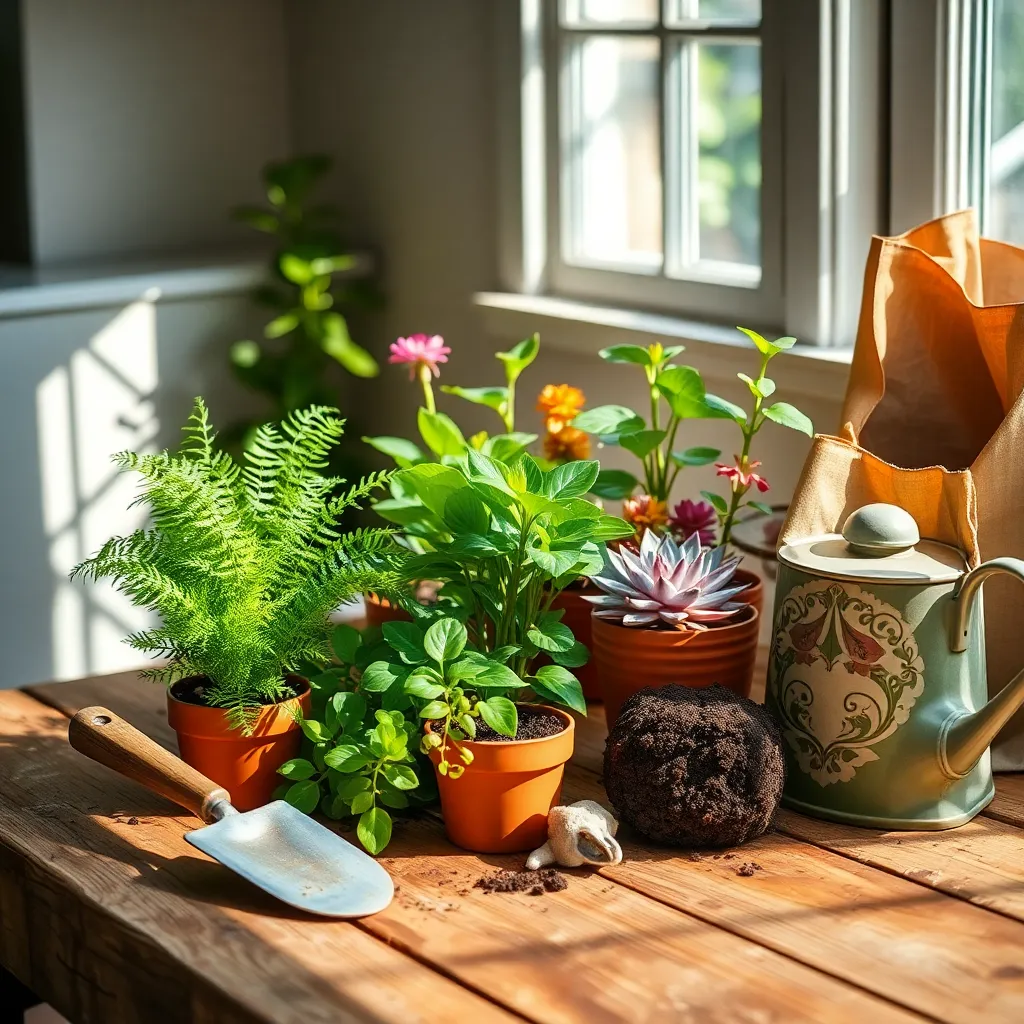
Understanding the importance of soil is crucial for the success of your houseplants. The right soil mix can make all the difference in plant health and growth, providing essential nutrients and proper drainage.
Begin with a well-draining potting mix, as most houseplants do not appreciate sitting in soggy soil. A standard mix often includes peat moss, perlite, and vermiculite, which together help retain moisture while allowing excess water to escape.
To cater to specific plant needs, consider customizing your soil blend. For instance, succulents and cacti require a more sandy mix, while tropical plants prefer a richer, organic matter-heavy soil.
Ensure that your pots have drainage holes to prevent water from accumulating at the bottom. This simple step reduces the risk of root rot, a common issue for many beginners.
Transplanting your houseplants into fresh soil every year or two can rejuvenate them and boost growth. This is especially important if you notice stunted growth or yellowing leaves, both indicators that the soil may be depleted of nutrients.
For an added boost, you can incorporate slow-release fertilizers into your potting mix. This can provide a continuous supply of nutrients over several months, supporting robust plant growth and health.
Common Beginner Mistakes to Avoid
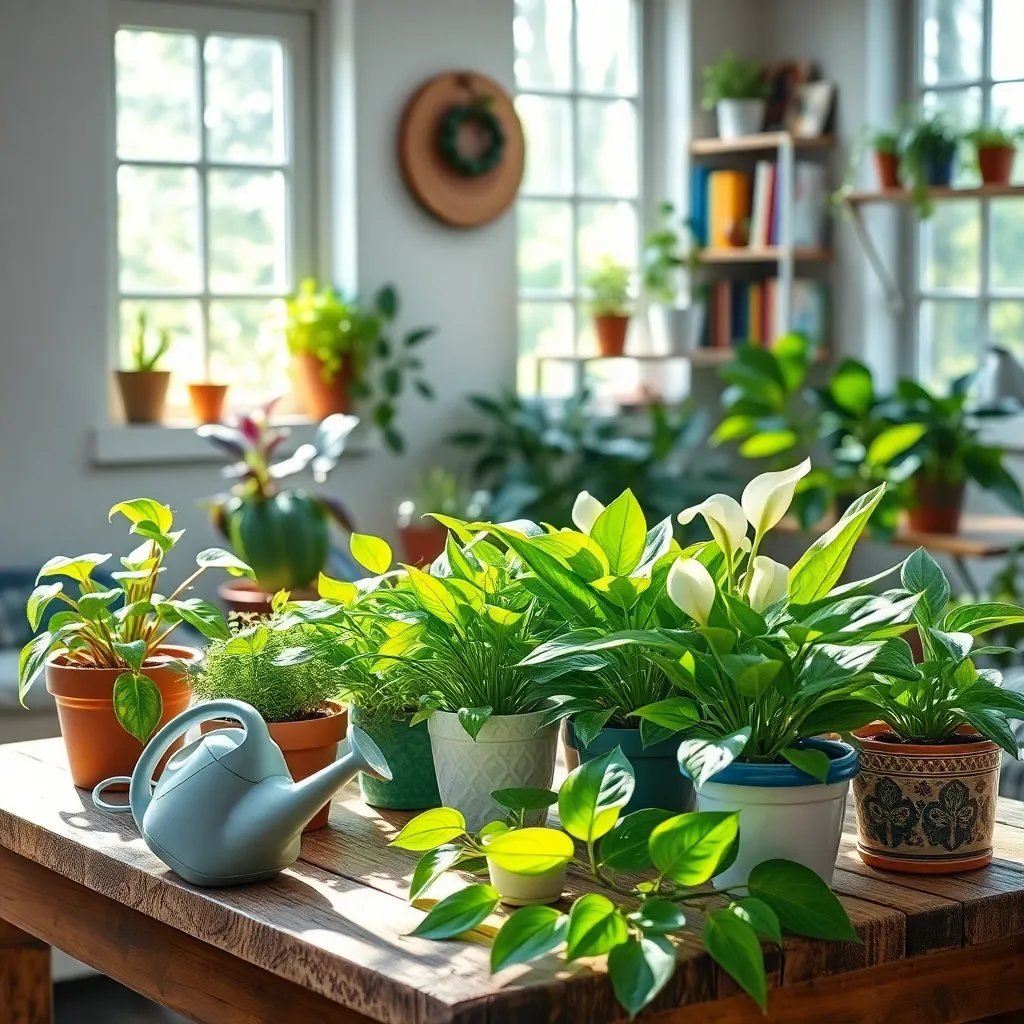
One of the most common mistakes beginners make is overwatering their plants. It’s essential to understand that most houseplants prefer their soil to dry out slightly between waterings, so always check the top inch of soil with your finger before adding water.
Another frequent error is using the wrong type of soil for your plant. Always choose a soil mix appropriate for your plant species, as some, like succulents, need a well-draining cactus mix, while others, like ferns, thrive in a peat-based potting soil.
Placing plants in improper lighting conditions can stunt their growth or lead to their demise. Observe the natural light in your home throughout the day and match it to the needs of your plant, whether it requires bright, indirect light or thrives in lower light conditions.
It’s also crucial to avoid the mistake of ignoring plant signs that indicate distress. Yellow leaves can signal overwatering, while crispy brown edges might mean your plant is getting too much direct sunlight or too little humidity.
Conclusion: Growing Success with These Plants
In exploring the world of houseplants for beginner gardeners, we’ve uncovered five key relationship concepts: the importance of nurturing patience, the joy of mutual growth, the value of consistent care, the beauty of resilience, and the delight of shared spaces. Each of these principles mirrors the essentials of a flourishing relationship, emphasizing that, just like plants, our connections require attention, understanding, and dedication.
As an actionable next step, why not choose a simple houseplant to start your own journey of nurturing growth? This small act can serve as a daily reminder of how patience and care can cultivate stronger bonds in all areas of life.
Remember, the journey of growth is ongoing and ever rewarding. Bookmark this article to revisit these insights, ensuring you have a handy guide to remind you of the parallels between tending plants and nurturing relationships.
Looking forward, embrace the potential of your relationships to thrive and bloom with the same vibrancy as a well-cared-for garden. Approach your connections with curiosity and care, and watch as they flourish into lasting, meaningful bonds. Now is the perfect time to sow the seeds of a successful relationship future.

